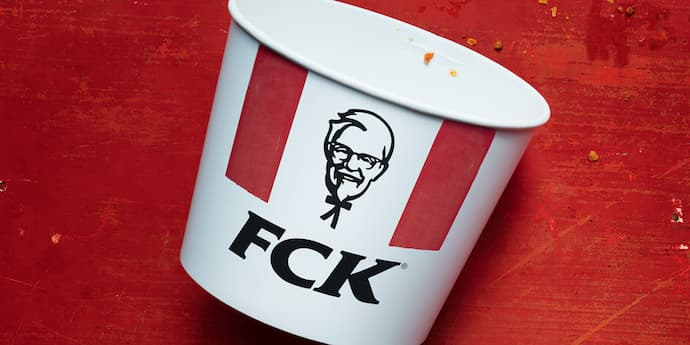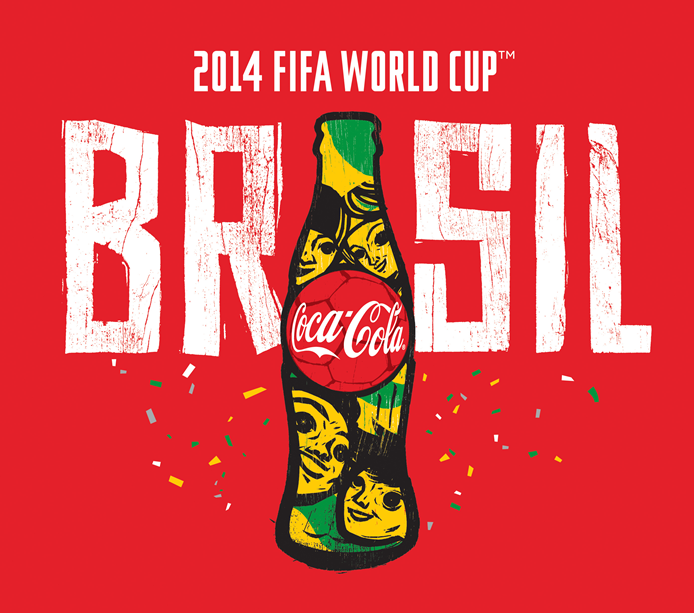Introduction
Advertising is a marketing initiative associated with communicating with the customers to inform, persuade, and remind them of specific products and services. In contemporary society, organizations have invested large capital shares in this effort to outperform their competitors. Some of the leading multinational companies in the world have successfully participated in advertising (Nelson-Field, 2020). This paper explores three advertisements such as Nike’s “Colin Kaepernick,” Kentucky Fried Chicken “FCK,” and CocaCola’s 2014 FIFA World Cup campaign.
Nike “Colin Kaepernick” campaign 2018
Nike released one of the most contentious marketing campaigns in its history of advertising. It starred Colin Kaepernick, a player in the National Football League who gained attention in 2018. Its message was delivered via TV and print media presenting a phrase on the Nike slogan “Believe in something, even if it means sacrificing everything. Just Do It” (Kim et al., 2020).
Immediately after the advertisement was released, a number of people reacted by posting pictures on social media platforms informing others to boycott the company. Following the release of the advertisement, a number of people reacted by posting pictures and videos of themselves burning Nike’s products on social media platforms while also urging others to boycott the company.

Figure 1 shows Nike’s official representation of the Colin Kaepernick advertisement. The advertisement above contains linguistic messages which refer to the captions or other written texts. The linguistic message embedded in this poster is “Believe in something. Even if it means sacrificing everything” (Kim et al., 2020). These texts inspire the viewer by promoting passion, motivation, and persistence. Denoted meanings refer to the visible elements in the image. At first glance, one can see a man’s face with an intense and straightforward gaze. Due to his dark skin tone and afro-hairstyle, one can presume his ethnic background (Kim et al., 2020). Lastly, the Swoosh logo is engraved in the image to confirm that it is a Nike advertisement.
The man’s gaze is straightforward, which signifies honesty and determination since the viewer presumes that he is focused on his objective. The image is also black and white to convey pure emotion. The athlete’s unedited face and powerful gaze combine with the image’s black and white aspect, signifying the athlete is jaded but relentless (Kim et al., 2020). Nevertheless, the image’s enciphered message is about Kaepernick’s litigation against the NFL for supposedly plotting to exclude him from the league over his campaign against social inequality and police brutality.
Kentucky Fried Chicken “FCK” 2018
KFC is an American fast-food eatery that specializes in selling fried chicken to its customers. The restaurant conducted a campaign in 2018 which included a picture of an empty bucket with its brand colors and the KFC letters cluttered (Nelson-Field, 2020). This commercial was delivered via print media to curb its problems. The company was facing supply issues, which resulted in a shortage of chicken to prepare its delicious meals (Nelson-Field, 2020). However, the fast-food café worked together with an advertising agency to offer, perhaps, one of the most creative apologies.

Figure 2 shows KFC’s official impression of its “FCK” in 2018. The linguistic message indicated in this picture is “FCK” in relation to the company’s initials being mixed up (Nelson-Field, 2020). The background to this is that the company’s operations in the United Kingdom were almost paralyzed because of an insufficient supply of chicken (Nelson-Field, 2020).
Therefore, the company sought out a smart way of addressing the matter to retain and win back the already lost customers. The eatery explicitly rearranged the letters to convey its message subtly (Nelson-Field, 2020). The commercial shows a KFC bucket that reads, “FCK” – as if to say, “FCK, this is awful.” Beyond the image, the food café goes on to apologize for the situation.
This poster’s denoted message includes a bucket, brand colors of the company, and a portrait engraved on the bucket. The eatery has used the red color since its inception because it is significant in the food industry. The red pigment in the café’s logo stands for tasty delicacies as the color is also used to attract food enthusiasts (Nelson-Field, 2020). The portrait attached to the bucket is Colonel Sanders, the food company founder, who has been dressed in a red cook’s apron (Nelson-Field, 2020). Black, white, and red colors induce warm feelings and give the logo a more global appeal.
Coca-Cola “World Cup” 2014
By financing the 2014 FIFA World Cup, Coca-Cola got the opportunity to participate in one of the largest marketing campaigns. This beverage business was fortunate to market itself to millions of soccer enthusiasts while also managing to bring millions of fans worldwide to watch the sporting event in Brazil (Ahmed et al., 2016). The message of this campaign was conveyed via TV media. The campaign’s role was to drive the company’s agenda while also commemorating the influence of the 2014 FIFA World Cup to integrate people.
The image below shows Coca-Cola’s official poster for the sporting event that was held in 2014. The linguistic messages scripted in the picture are “2014 FIFA World Cup,” “Brazil,” and “Coca Cola”(Ahmed et al., 2016). The texts featured in the poster have their significance in the advertising campaign. Brazil is regarded as everyone’s dream destination, whereas Coca-Cola is also considered a favorite to almost everyone globally (Ahmed et al., 2016).
Similarly, the FIFA World Cup is viewed as a favorite sporting event by soccer fans. Therefore, the beverage company utilized the sporting event to commemorate the loyal football fans while showcasing how the game is influential for an inclusive and connected world.

This poster’s denoted messages are the happiness flag, a Coca-Cola bottle, and a red artboard. The happiness flag is a photomosaic made up of various fan portraits and messages (Ahmed et al., 2016). At the same time, the entire poster incorporates elements of Brazil’s street art with portraits of four Brazilians replicated in Speto’s signature graphic technique (Ahmed et al., 2016). The photomosaic represents people from various backgrounds brought together with one of the world’s most preferred sporting events (Ahmed et al., 2016). Moreover, the visual identity of the poster also represents celebration, happiness, and unity (Ahmed et al., 2016). This marketing campaign incorporated several artistic elements to foster harmony and commemoration while accomplishing its goal as a marketing initiative.
Conclusion
This paper has explored the three different marketing campaigns that are considered the most successful in business history. The advertisements have been explored by analyzing various messages presented in the posters. Nike’s commercial that features Colin Kaepernick represents a socio-cultural segment of the society, while KFC’s commercial has highlighted how businesses can be challenged. Lastly, the Coca-Cola commercial has shown the significance of sports in contemporary civilization.
References
Ahmed, R., Kumar, A., Mujtaba, M., & Jumani, J. (2016). Strategic Marketing Plan for Coca-Cola—2016, 124(3), 33. Web.
Kim, J. K., Overton, H., Bhalla, N., & Li, J.-Y. (2020). Nike, Colin Kaepernick, and the politicization of sports: Examining perceived organizational motives and public responses. Public Relations Review, 46(2), 101856. Web.
Nelson-Field, K. (2020). How Advertising Works (so far). In the Attention Economy and How Media Works (pp. 45–53). Springer.